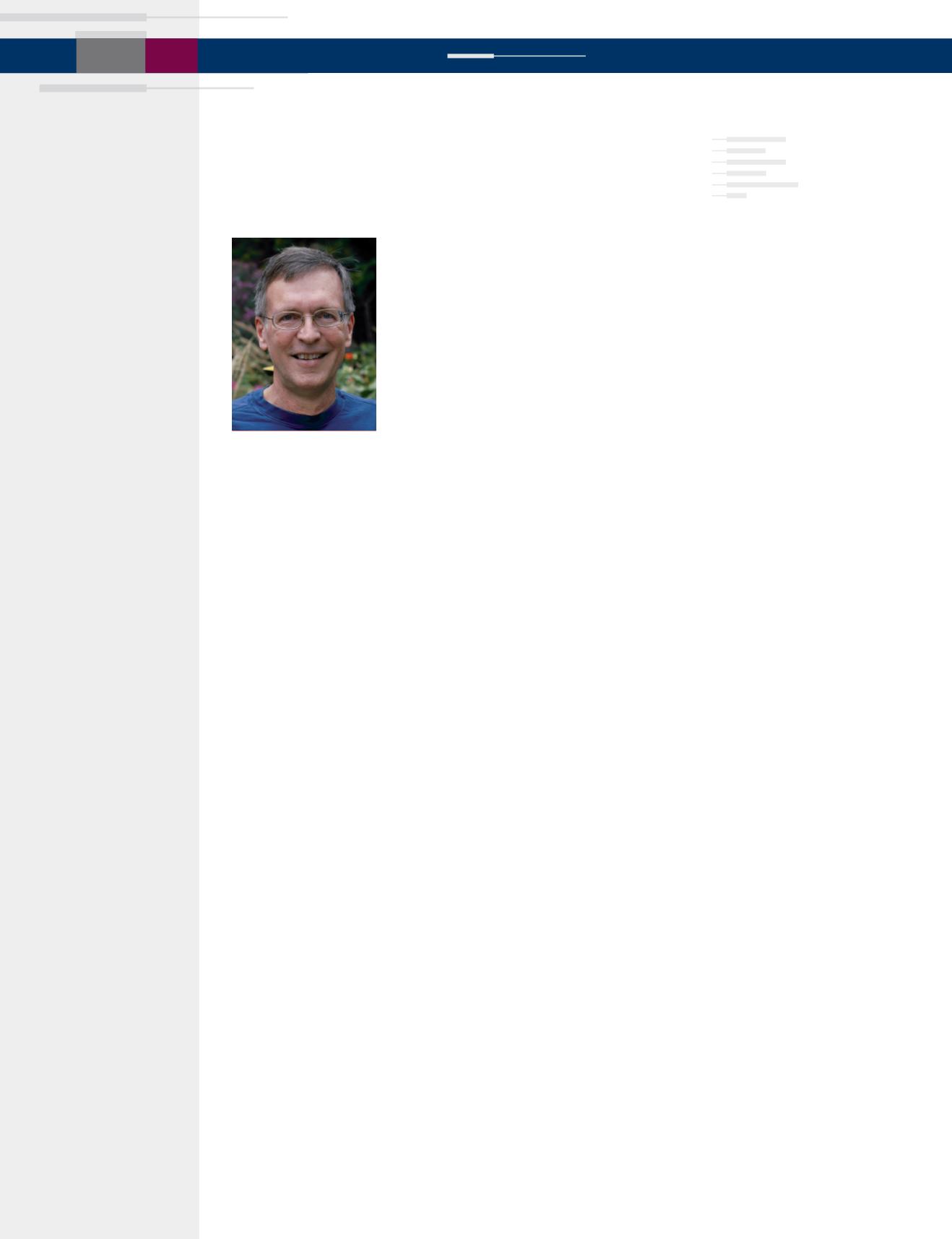
BIOPHYSICAL SOCIETY NEWSLETTER
2
AUGUST
2014
BIOPHYSICAL SOCIETY
Officers
President
Dorothy Beckett
President-Elect
Edward Egelman
Past-President
Francisco Bezanilla
Secretary
Lukas Tamm
Treasurer
Paul Axelsen
Council
Olga Boudker
Taekjip Ha
Samantha Harris
Kalina Hristova
Juliette Lecomte
Amy Lee
Marcia Levitus
Merritt Maduke
Daniel Minor, Jr.
Jeanne Nerbonne
Antoine van Oijen
Joseph D. Puglisi
Michael Pusch
Bonnie Wallace
David Yue
Biophysical Journal
Leslie Loew
Editor-in-Chief
Society Office
Ro Kampman
Executive Officer
Newsletter
Ray Wolfe
Alisha Yocum
Production
Laura Phelan
Profile
Ellen Weiss
Public Affairs
The
Biophysical Society Newsletter
(ISSN 0006-3495) is published
twelve times per year, January-
December, by the Biophysical
Society, 11400 Rockville Pike, Suite
800, Rockville, Maryland 20852.
Distributed to USA members
and other countries at no cost.
Canadian GST No. 898477062.
Postmaster: Send address changes
to Biophysical Society, 11400
Rockville Pike, Suite 800, Rockville,
MD 20852. Copyright © 2014 by
the Biophysical Society. Printed in
the United States of America.
All rights reserved.
Biophysicist in Profile
Jim Weisshaar
, Professor of Chemistry at the University of Wisconsin,
Madison, came late to biophysics, after studying gas phase collisions and
spectroscopy using lasers and molecular beams as a physical chemist for 25
years. “In 1997,” he says, “I spent a sabbatical year with
Ed Samulski
at UNC
Chapel Hill studying the structure of alanine dipeptide in liquid crystalline
media. Assigning those many sharp lines arising from dipolar couplings got
me interested. A few years later, I dropped the gas phase and started learning
single-molecule fluorescence. I call it my ‘scientific mid-life crisis,’ to distin-
guish it from the other ones.”
Weisshaar first became engaged in science during his high school chemistry
class. He was lucky to have a teacher,
Richard Burke
, who believed in the
abilities of his students. Weisshaar recalls, “He had us solving the Schrodinger
equation for the hydrogen atom in Chem II! I thought quantized atomic
energy levels that could be computed accurately were amazing.” Recently, the
two reconnected. “Mr. Burke called me up out of the blue. I hadn’t spoken
with him since high school days. Evidently he had googled me. It was a spe-
cial treat catching up with him, now 72 years old and running his own farm.”
After high school, Weisshaar attended Michigan State University, where he
earned his bachelor of science in chemistry. He then went on to the Univer-
sity of California, Berkeley, where he completed his PhD in chemistry with
Brad Moore
as his advisor. Weisshaar completed his postdoc at the University
of Colorado, Boulder, working on gas phase ion collisions under
Steve Leone,
Barney Ellison
, and
Veronica Bierbaum
. Following his postdoc, Weisshaar
landed at the University of Wisconsin, Madison, where he established himself
in the Department of Chemistry. He worked happily in physical chemistry
for twenty-five years before changing fields. “Changing fields from gas phase
physical chemistry to biophysics has been a huge challenge,” Weisshaar says.
“It turns out that all the molecular quantum mechanics I knew became
instantly irrelevant. Now I need stat mech and thermo! On the other hand,
my quantitative instincts from [my] physical chemistry days have served me
well. Learning enough cell biology to be able to talk with those folks in their
own language has been the hardest part. That’s a continuing challenge. The
Department [of Chemistry at the University of Wisconsin, Madison] was
very patient during the transition years.”
William Moerner
of Stanford University and 2014 co-recipient of the Nobel
Prize in Chemistry is a colleague in the single-molecule field who has watched
Weisshaar’s transition into biophysics over the past decade. Moerner says, “In
the mid-2000s, he switched from more conventional physical chemistry to
biophysics, and he has become a leader in the use of single-molecule studies
to understand a variety of biophysical problems such as diffusion in mem-
branes and super-resolution analysis of bacterial protein distributions…He is
a friendly, deep colleague who always presents a careful, incisive analysis.”
Weisshaar’s longtime colleague at Wisconsin,
Tom Record
, admires the transi-
tion Weisshaar has been able to achieve. “He made a remarkable
transition from gas phase chemical physicist to molecular and cellular
JIM WEISSHAAR


